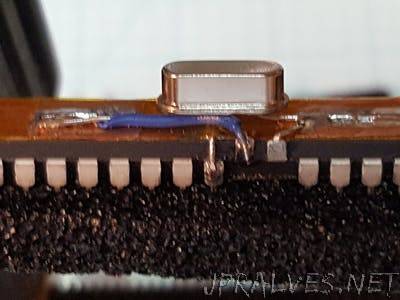
“Barebones ATmega328P-PU with tunable crystal load capacitors, and it is all a gimmick! Arduino on Internal Oscillator Crystal as Clock Source by Naman Chauhan is a great project if you can live with 8MHz using the internal RC oscillator of the Atmega328P chip. I really like Naman’s project; I did my own version of the 8MHz Arduino many years ago here on Hackster. The 8MHz version conserves power, is Arduino IDE friendly, and is as cheap as the raw Atmel chip. But what if you need a 16MHz Crystal Stabilized barebones? Silly me, there must be a thousand projects out on the Internet about building your own Arduino from bare parts. Heck, I even did one back a while here on Hackster. But can I make it more bare and still run at 16MHz? You bet your chips I can! One of the more annoying things about crystal-controlled micro-controllers is that the crystal circuitry employs something known as load capacitors. (Not true for circuits built with a ceramic resonator as the resonator has manufactured capacitance within the unit.) With the Arduino barebone circuits, two small load capacitors of values from 12pF to 22pF are usually specified and the value is based upon the specific crystal manufacturing process. Specific values are therefore in the manufacturer’s datasheet. Adafruit has a rather nice write-up on the subject if you require more information. If I could just throw away everything except the crystal, then I am only 1 component over that used in Naman’s project with a total of just 2 parts: uC and crystal. Are the load caps not required? Yes, but we can actually make ‘em right into the project with a little hacking. Remember, electronics and physics are eternally linked. The process to build a small capacitor is not unlike what was done back in 1745 when the Leyden Jar was created. Except in our case, our little capacitor (we will need 2 identical ones) will be just 7.10 mm wide and between 10.0 and 13.0 mm long. Instead of glass, we are going to use a marvelous tape known as Kapton selected for the high temperature thermal stability of the product.”
